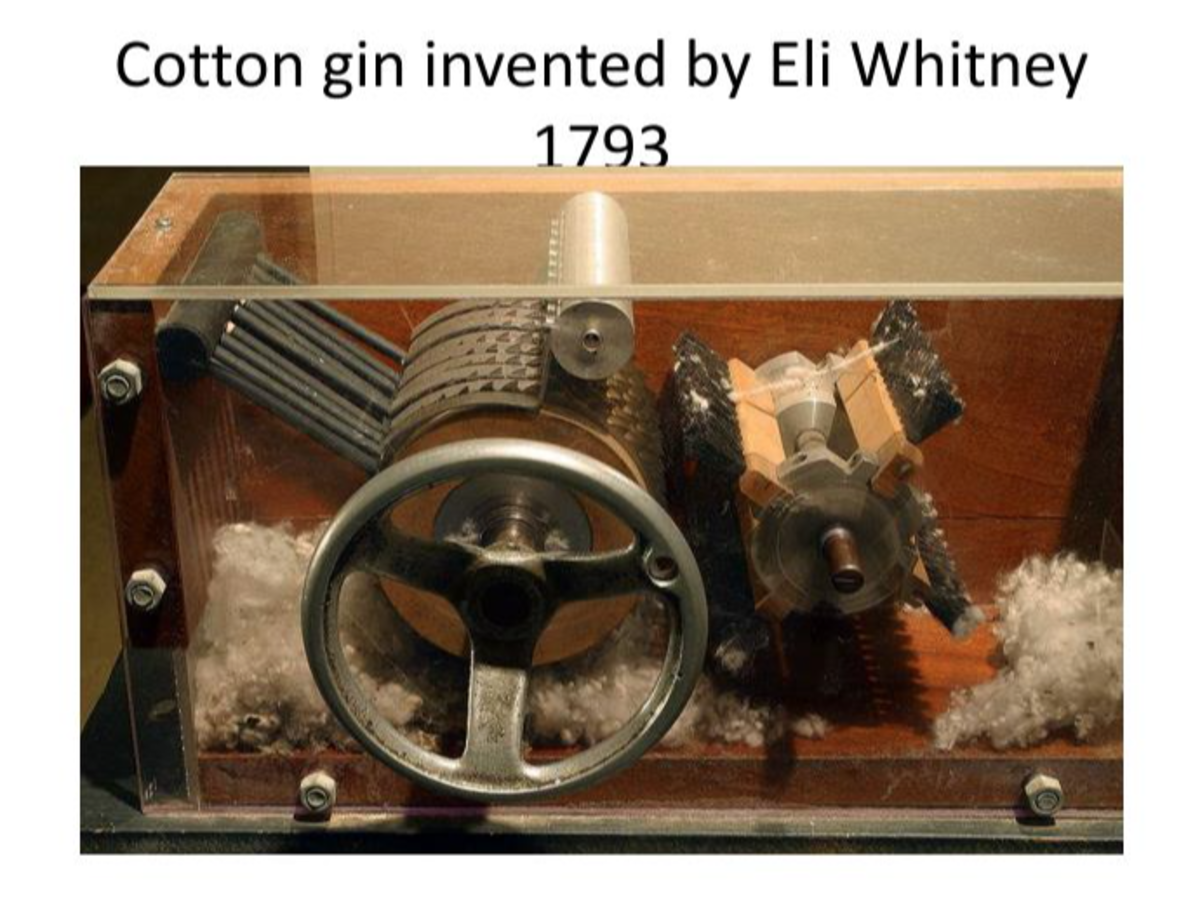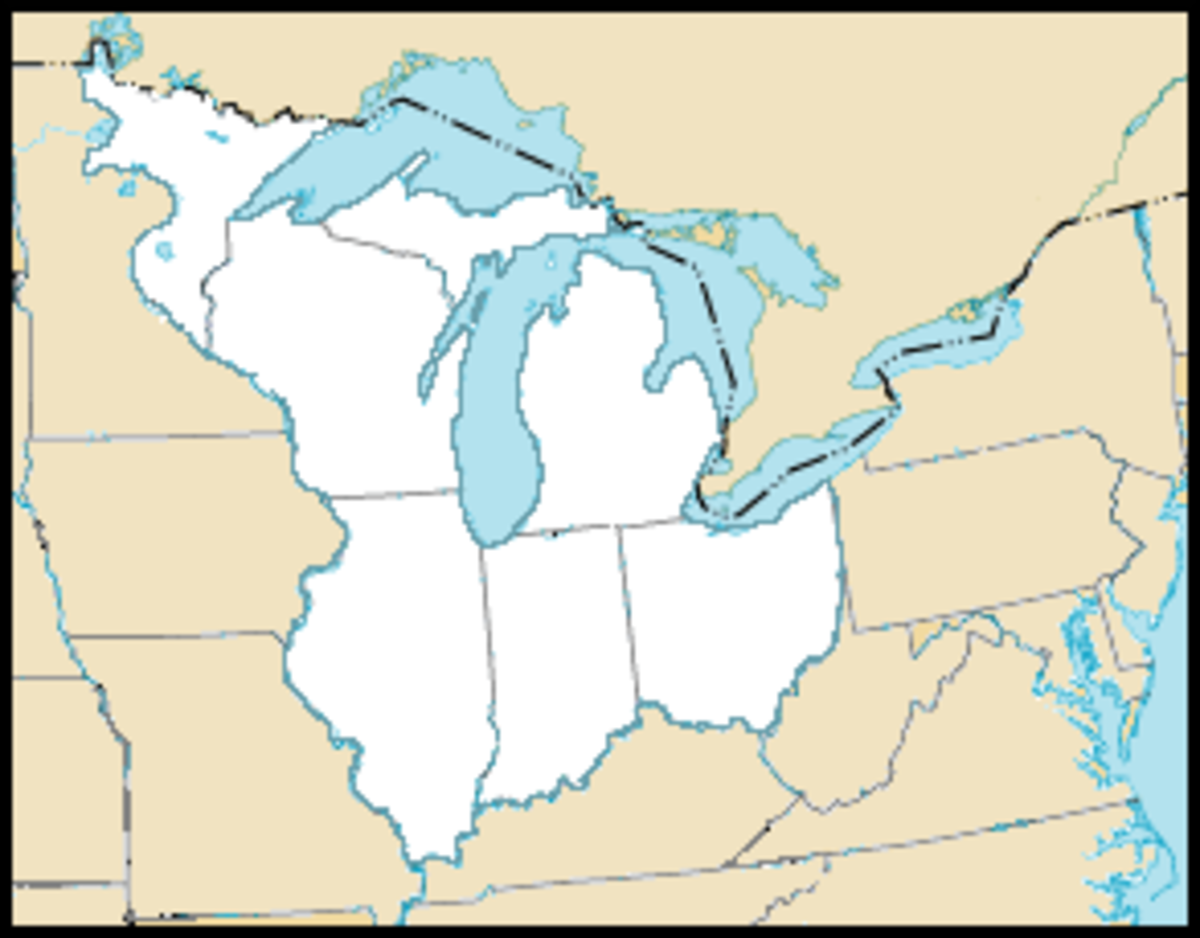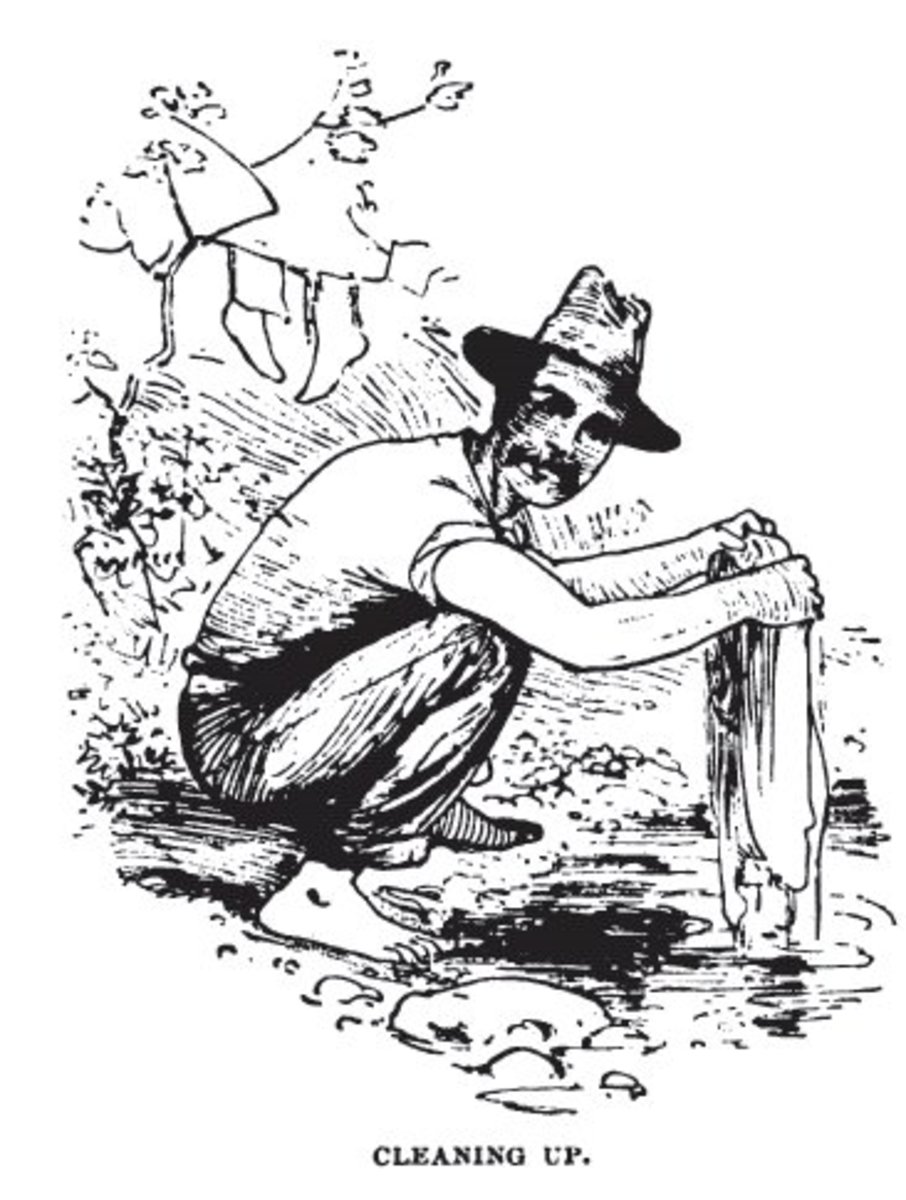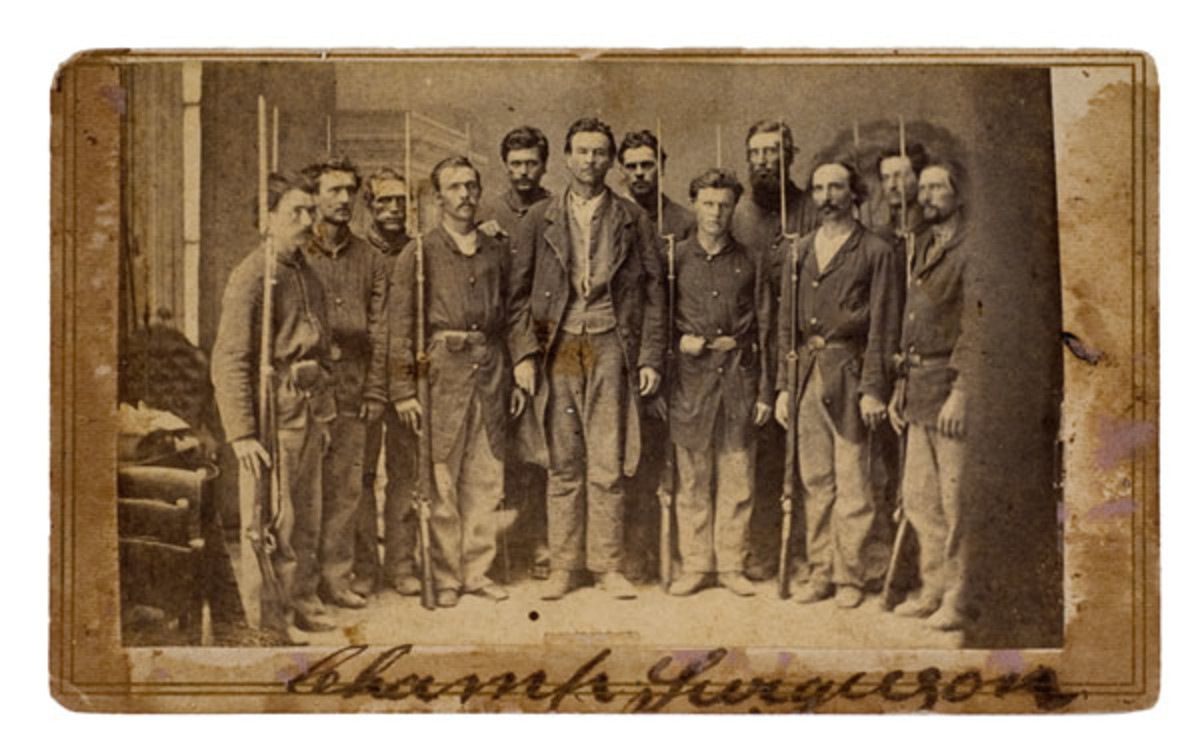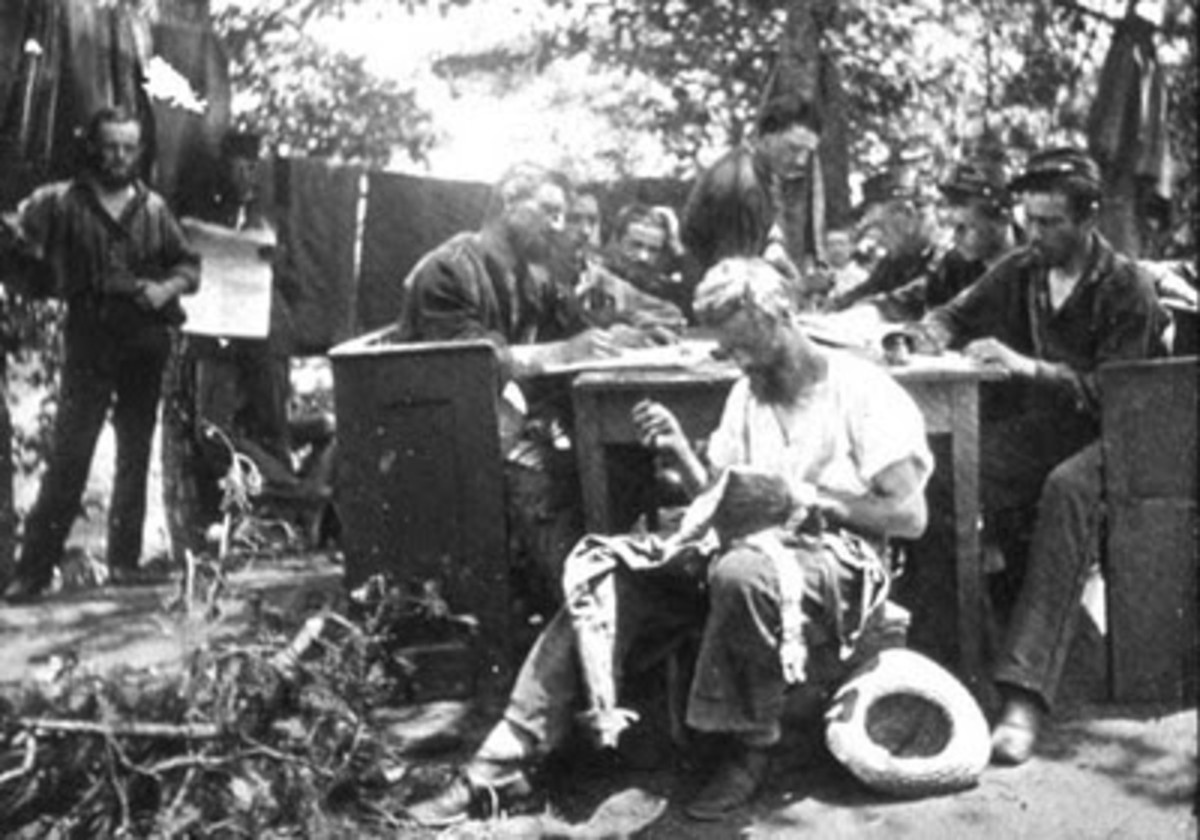- HubPages»
- Education and Science»
- History & Archaeology»
- History of the Americas»
- American History
Factors Leading to the Civil War
History: A Story of Emotion
History has always been looked at as a series of events that took place in a certain order which led to other events which led to an ultimately inevitable outcome. However, what is lost in this school of thought is the emotion that is placed in every decision, every participant involved, every piece of writing during a time period, etc. It's easy to sit back and ponder events happening in a logical precession of cause and effect until the final result. But, if history is looked at as emotional, a different -more non-logical point of view, then it begins to explain why people, these historical actors, did the things they did which started the proverbial ball rolling.
Was the Civil War Inevitable?
The Civil War may be one of the most researched topics in all of American history. Historians argue what events had mainly caused the Civil War as well as if it was inevitable to happen. The perception of why the Civil War was fought had changed from looking at the distinct differences between the North and the South to looking at the culture and ideologies between the two sides. Even though in the 1850s the air may have seemed thick with emotion, there is no distinct reason to believe the South would have seceded regardless. So was the Civil War inevitable to happen? Not necessarily. Was the Civil War something that could have been avoided? Of course. The issues that divided the North and the South may have been too great a problem to continue compromising though. These issues eventually came to a head in 1860. The events and historical actors that were present at the time contributed to the Civil War.
The Jacksonian Era
American politics had changed drastically by the late 1820's. The emergence of mass politics involved more of the people in America rather than through parties. Mass politics was riddled with coercion where a person may have been forced or blackmailed into voting a certain way. After the war of 1812, Andrew Jackson became a very popular and national hero. This carried through to 1828 when Jackson was elected President. Jackson was a highly popular President at the time, but looking back and reflecting on him now, his policies were harsh and oppressive, especially to Native Americans.
Andrew Jackson's Spoils System developed that rewarded people government jobs in return for providing him political support during his campaign. Jackson's friends were often the recipients of the spoils system and were often called his cronies. around 2,000 people were fired and replaced with this loyal supporters.
One of the most controversial policies that Andrew Jackson implemented was Indian Removal. Andrew Jackson was a known Indian hater, something that spawned back in the War of 1812. Jackson implemented Indian removal which forced all Native Americans to move westward past the Mississippi River. In 1838, the Cherokee Indians were forced to march out of their lands in what was known as the Trail of Tears. Fairly soon, only small pockets of Native Americans resided east of the Mississippi.
The political system was split with the introduction of party lines that had generated since the time Thomas Jefferson had taken Presidential office and is still in place today. Party names have switched multiple times since the Founding Fathers' time, but the idea remains the same. Each political party had an agenda it wanted to achieve. Ordinary Americans were swayed either way from debates or speeches given by candidates as to who to vote for, much like today. This split in party ideals would soon come to fruition in regards to slavery and the need for expansion towards the west.
Abolition
As slavery grew in the South because of the increased demand for cotton throughout the world, the abolitionist movement also increased in intensity. Abolition was more commonplace in the North than in the South, but this does not mean that everyone in the North felt in favor of abolition. There was worry from many Northerners about the already straining tensions between Northern and Southern culture.
Northern Industry and Cities
The Northern United States was an industrial powerhouse when it came to the amount of factories and processing power. Since the Industrial Revolution came to America in the 1800s, new technology was used to create various items that used to only be made by hand. For example, with the use of steam and water, machines were powered and used to spin textiles (clothes). Many of the factories were built in the North due to the massive supply of coal and iron needed to build and run a factory. By 1860, 70% of factories were located in the North. The American economy exploded into a much bigger industry. With the help of machines, more could get done than what could be achieved in the home. Many of the factories and mills were located along a river so that they could utilize the current to generate power.
Cities boomed because of the Revolution. 9 out of 10 of the largest cities in America were located in the North. Immigrants looking to escape their home country came to America looking for work or opportunity in general. Many of the poorer immigrants stayed in the city because they could not afford to travel out to the rural countryside. These immigrants made up a majority of the population that resided in cities.
Irish Women
Irish women were stereotyped in America as horrible cooks. This stereotype originated when the Irish were immigrating to America because of the Potato Famine in Ireland. The Irish (under control of the British government) were only paid in potatoes for their farming endeavors. The potato was then seen as an oppression symbol to the Irish. Therefor, Irish women did not associate themselves with cooking food, especially the potato.
The Factory System
Hardly any manufacturing was done in the home by this time. Much of the manufacturing was done in factories staffed by workers who ran various machines. This was called the factory system. Mills employed young women to work. In the 1800s, women were not largely independent, so mills offered a form of financial independence for women. Many of the mills also offered a home for these young women and fed them at no charge.
Eventually, the mills had obtained a standard workforce in Irish immigrant women. Some of the very first work unions started to be created. They focused on different work issues such as work week hours, work conditions, and health concerns. These unions did not last long because the labor needed in factories were not especially for skilled jobs that required training.
Southern Customs
In the South, prestige and property were two of the most valuable things a man could own. A majority of Southern men relied on another man's word to be honest. If a man spoke about doing something, he would be sure to get what he said done, or else lose the respect from others he needed. The South was a more slower culture compared to the North. People took their time and were hospitable. This culture would account for the lack of change during the industrial period that the North embraced.
Southern Agriculture
While the North focused heavily on increasing manufactoring and competing on a global scale, the South was where the agricultural hot bed for the nation was. It is an obvious statement to say that Southern agriculture was dominated by slavery and plantation farming. The primary product that most southern plantations grew was cotton and was know as a cash-crop. Cotton was becoming highly profitable due to the invention of Eli Whitney's cotton gin, which cut the time it took to separate cotton fibers from the cotton seed down considerably. Cotton accounted for 50% of all American exports. However, because the South was not industrialized as heavily as the North, they had very limited ways to create more finished goods that required cotton. This created a dependency by the South on Northern factories.
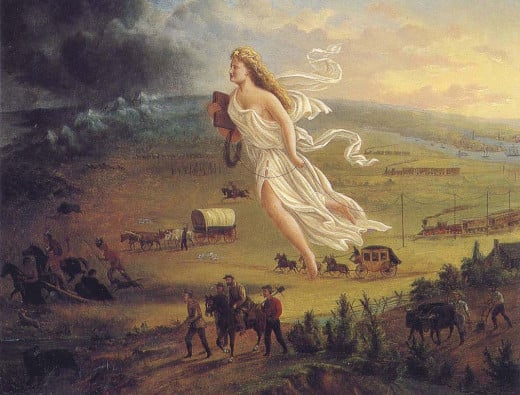
Manifest Destiny
America had continued to expand in land accumulation ever since 1607 with the establishment of Jamestown. Manifest Destiny was the notion that Americans had some god-sent mission to spread democracy and liberty through the expansion of land. The westward movement caused several arguments between Northern and Southern states. Congressmen like Henry Clay, notably nicknamed as the "Great Compromiser", were at the end of their lifetime come the late 1850s.
The Compromise of 1850 included parts to make both the North and the South content during this time of expansion. The South and North were worried about an imbalance of power in the House of Representatives and the Senate. If a state were to be admitted one way or the other, an imbalance would occur meaning that either the North or the South would have power over the other and vote according to their wants and needs. The Compromise of 1850 allowed for California to be admitted into the Union (as a Northern free state). However, the Fugitive Slave Law was implemented as part of this compromise with required escaped slaves to be returned to their owners if they were caught. This law was something that the South wanted to protect their investments in slave labor. The last thing that was implemented by the Compromise of 1850 was Popular Sovereignty. This was a vote by the people living in a territory of the United States to decide whether to become a free state or a slave owning state.
Missouri Compromise
Passed in 1820 under President James Monroe, the Missouri Compromise entitled both Southern slave-owning states and Northern free states to expansion of their pro or anti-slavery ideals. The Compromise states that slavery was prohibited in the land acquired in the Louisiana Purchase above the parallel 36°30′ north. However, this boundary of the 36th parallel did not encompass the soon-to-be state of Missouri. Therefor, Missouri would become a slave-owning state.
The Kansas-Nebraska Act
The Kansas-Nebraska Act overturned the Missouri Compromise in 1854. Popular Sovereignty became the means to vote whether a territory became a free state of slave owning state by the popular vote of the people living in that specific territory. This led to the mass movement of people out to these territories (some sponsored by the state they move out of) in order to have more people in the territory to vote for or against slavery. As more and more people moved into the same territory, who had conflicting ideas, violence would soon erupt. A pro-slavery mob effectively destroyed many abolitionist homes and businesses in Lawrence, Kansas. In response, John Brown led an anti-slavery group to kill pro-slavery settlers at Pottawatomic Creek. These series of events was soon to be called Bleeding Kansas. The violence had even broken out in the United States Senate when abolitionist Senator Charles Sumner gave a speech that had remarks against slavery in it, congressman Preston Brooks beat him with a cane.
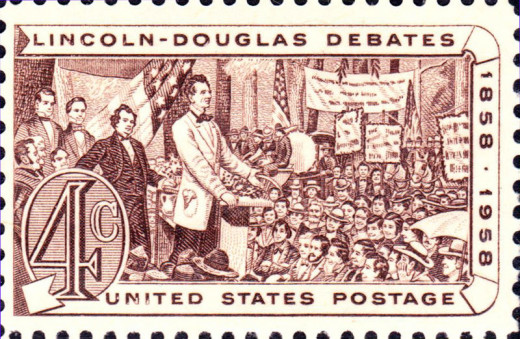
Lincoln vs. Douglas
The election of 1860 may have been, arguably, the breaking point for Southern states before secceding. Prior to the election, there were two major parties battling for the presidency. In 1858, Abraham Lincoln, a Republican from Illinois that was concerned with slavery as a moral issue, debated with Stephen Douglas, a Democrat who was also from the state of Illinois who insisted popular sovereignty was the best way to approach slavery. These thoughts was essentially the dividing thought process of the United States at the time. Although Lincoln believed slavery to be a moral issue, he knew that a rapid removal of it would devastate America's economy, which is what more liberal candidates suggested. Lincoln's ideal was for keeping together the United States through a series compromises that would eventually remove slavery slowly. When Lincoln won the presidency in 1860, the Southern states felt as though they were not going to be represented fairly. These states viewed Lincoln as the President who was strictly opposed to slavery and immediately end it, effectively ending any profit to be gained from growing cotton. The following result was the seccession of 11 states from the Union and the fight to gain them back.





